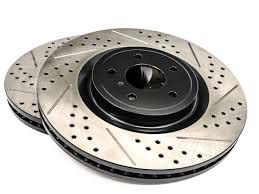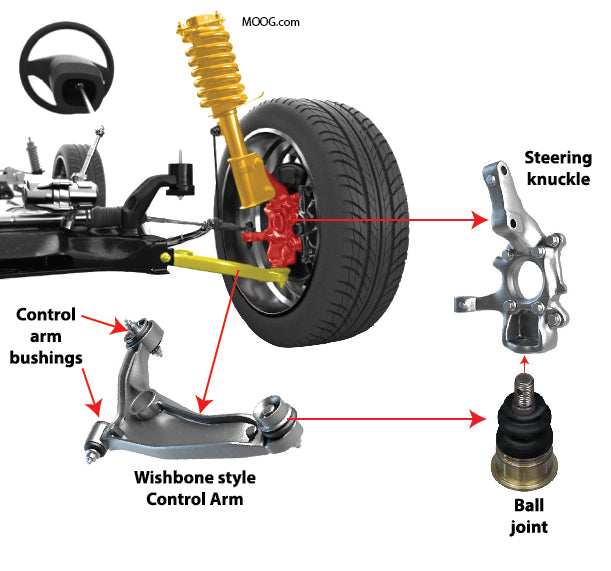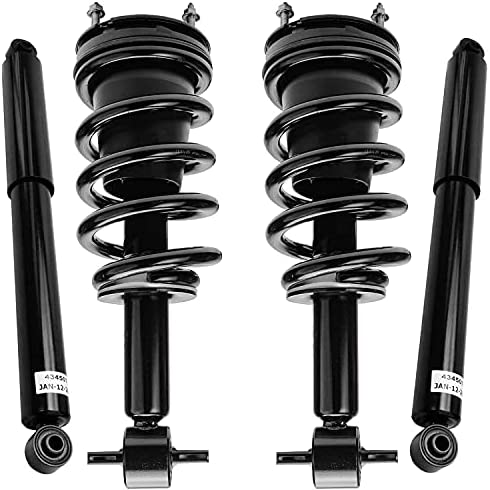Different Types of Brake Rotors
Brake rotors (aka brake discs) are an essential part of your vehicle’s brake system and are the friction surface that the brake pads squeeze to slow down the wheel’s rotation. Compared to a bicycle; a bicycle rim serves the same function as a brake rotor/disc. When the bicycle brake pads squeeze the rim, it slows you down. Similarly, on a vehicle the brake pads clamp onto on the rotor/disc when you hit the brake, and they need to be working properly if you want your vehicle to stop.
When your brake rotors overheat, your stopping distance will increase and brake pads can deteriorate. This can lead to severe problems in how your vehicle handles braking and stops and increase safety risk to yourself and others on the road. Here’s a breakdown of the different types of brake rotors so you can determine which is best for your vehicle. You can also contact us for brake rotor service and questions.
Cast iron rotors

Cast iron rotors are the most common type of brake rotors available. They’re available as either one or two-piece parts and can work in most types of vehicles. (High performing vehicles will need a two-piece cast iron rotor.) Though they’re the most common, cast iron rotors are also the heaviest option. This can impact your vehicle’s handling since it affects how much your car weighs, especially by your front wheels.
High carbon rotors

These rotors are actually made from iron; they just have carbon mixed in. The metallic content of high carbon motors keeps the rotor from cracking and also reduces vibrations and noise. These rotors are also able to withstand and dissipate a lot of heat quickly. The catch is that high carbon rotors are more expensive than standard cast iron rotors.
Steel rotors

Racers traditionally love using steel rotors because they’re significantly lighter and thinner than cast iron rotors. They also handle heat better. The main downside is that they aren’t as durable as other types. Warped steel rotors can cause a loud noise and even a pulsating pedal every time you brake.
Layered steel rotors

A way to get around the warping that some steel rotors experience is by layering sheets of steel together and then laminating them. Layered steel rotors are preferred choice over standard steel rotors for racers. Primarily you’ll see these on professional racing vehicles, since most manufacturers aren’t putting them into passenger vehicles.
Aluminum rotors

Aluminum is another lightweight material, but aluminum rotors tend to melt at a lower temperature than some of the other rotor materials out there. You’ll find them on motorcycles rather than cars, trucks, and SUVs. Since motorcycles weigh less, braking is easier on the rotors and doesn’t create as much heat.
Ceramic rotors

Most high-end luxury cars have ceramic rotors (think Ferrari or Porsche). Ceramic rotors have the highest heat capacity out of all the rotor types. They’re able to maintain a consistent force and pressure as the rotor temperature rises, giving drivers a smooth ride no matter the elements. These rotors are significantly lighter than iron and steel rotors. In short, ceramic rotors offer light weight high performance braking. They are expensive which is why you’ll usually only find them in high performance cars.
How to choose the right rotor for your vehicle
When it comes to what type of rotor to get for your vehicle, it all comes down to what you drive and how you drive it. If you’re a commuter, you’re probably doing just fine with cast iron rotors. However, if you have a high-performance car and enjoy taking it on different types of terrain, you might want to consider high carbon or ceramic rotors. If you have a motorcycle, aluminum rotors are probably your best bet. If you’re into racing, then consider getting steel or ceramic rotors.
If you have questions about your brake system or want us to take a look at your rotors to see if they need to be repaired or replaced, set up an appointment today. We’ll help you figure out what type of rotor will work best for you based on your vehicle and your driving habits.



